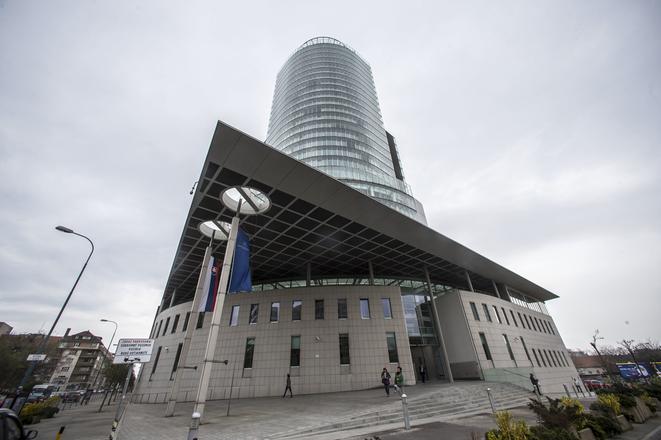In the globalised world a slowing economy in China means a big risk for the economic growth of Slovakia. In spite of this the National Bank of Slovakia (NBS) expects that Slovakia’s gross domestic product will keep growing – with lower hunger for exports compensated by higher domestic demand.
The NBS predicts that Slovakia’s GDP will increase by 3.2 percent in 2016 and by 3.3 percent in 2017. This should be a moderate slow-down from 2015’s 3.6 percent growth fuelled by extensive spending of EU funds and growing exports. For 2018 it predicts, thanks to the launch of production in new carmakers’ capacities, growth of 4.2 percent.
“Probably the biggest risk for the Slovakia’s economy is the current slowdown [of the economic growth] in China,” said NBS Governor Jozef Makúch. “The problem is that in the globalised world problems of China have effects also on us.”
China is one of Slovakia’s biggest trade partners outside Europe with an indirect influence via Slovakia’s dominant trade partners in the European Union where more than 80 percent of Slovakia’s exports go, Vladimír Vaňo, head of CEE research at Sberbank Europe, recalled for the Hospodárske Noviny daily.
The Asian Development Bank (ADB) forecast growth in China, the world’s second-largest economy, would slow to 6.5 percent this year from 6.9 percent in 2015, its weakest expansion in a quarter century, Reuters reported on March 30. Growth is projected to slow further to 6.3 percent in 2017.
In its latest medium-term forecast for 2016-2018 the Slovak central bank calculated the possible impacts of a slower growth of the China’s economy.
“If the China’s economy slowed down more steeply, to somewhere around 5 percent, this would, of course, mirror in a lower growth in the eurozone but especially in Slovakia’s exports directly to China or towards other trade partners,” said Ján Tóth, the NBS vice-governor.
The NBS estimates that under such a scenario the lower growth in China may shave 0.26 percentage points off of the Slovakia’s economic grown in 2016, 0.68 points in 2017 and 0.38 points in 2018.
Under the influence of developing economies, especially China, the NBS has revised foreign demand downward. The central bank reduced its estimates for the growth of foreign demand for 2016 by 0.5 percentage points to 3.5 percent and for 2017 by 0.3 points to 4.5 percent. For year 2018 the central bank predicts a growth of 4.8 percent.
The growth of foreign demand and the GDP in 2018 should be propelled by the growing automotive industry. This year the British carmaker Jaguar Land Rover should launch production in its brand new plant near Nitra and the Slovak arm of the German carmaker Volkswagen in its expanded capacities in Bratislava. The NBS estimates that they will contribute 0.7 percentage points to GDP growth.
The latest prediction of the NBS does not reflect yet plans of the new government, for example the planned postponement of a balanced state budget from 2018 to 2020.
More jobs, lower unemployment
The central bank estimates that Slovakia would generate up to 75,000 new jobs between 2016 and 2018, of which 41,000 should be created in trade and services. But creation of new jobs could lead to tensions in some sectors and companies may solve the lack of employees by increasing working hours of employees and employment of older people or foreigners.
“The labour market employs more older people, especially 55-year old and older, and employment of workers from abroad is increasing too,” said Tóth.
As a consequence the jobless rate in Slovakia should continue to decrease from 11.5 percent in 2015 to 8.7 percent in 2018.
“The total number of the unemployed might decrease after 10 years to the pre-crisis level,” said Makúch.
Better development on the labour market is expected to bring a rise in nominal wages, between 3.3 and 3.8 percent for next three years while real wages should increase too thanks to low inflation.
“This year will be again beneficial for consumers,” Andrej Arady, macro-economy analyst of VÚB Bank told the public broadcaster RTVS, recalling that the harmonised index of consumer prices (HICP) is predicted to be 0.2 percent in 2016 while real wages are expected to rise by 3.4 percent. As a consequence analysts expect that consumers would spend more.
In spite of positive outlooks NBS governor Makúch recalled the need for structural reforms.
“Also the European Commission in its latest [annual] country report about Slovakia stressed again the need to address sustainability of the health-care sector, removal of barriers in the education system, improve public services and the need to solve regional differences also via completion of the road infrastructure,” said Makúch.



 The National Bank of Slovakia (source: Sme)
The National Bank of Slovakia (source: Sme)